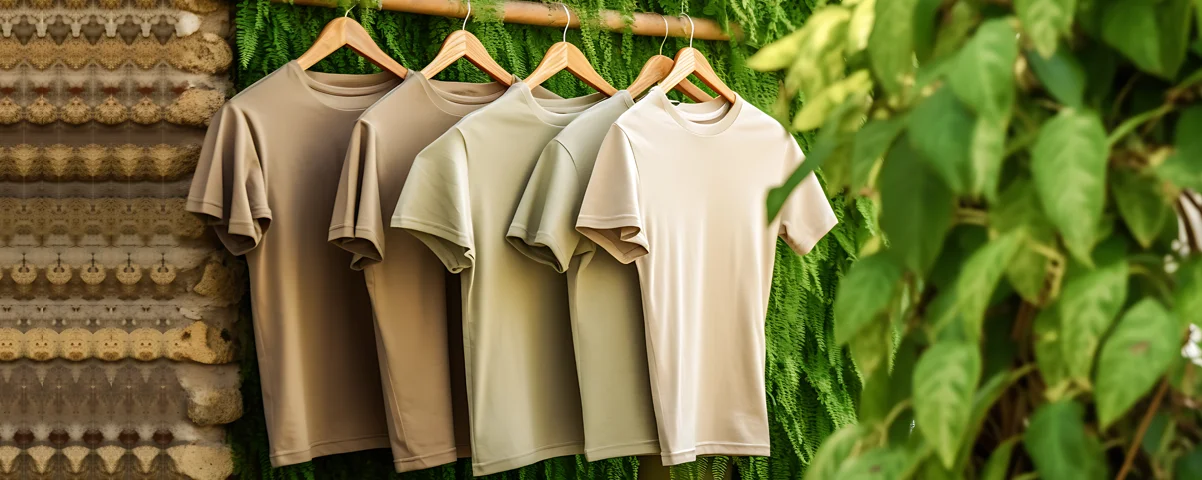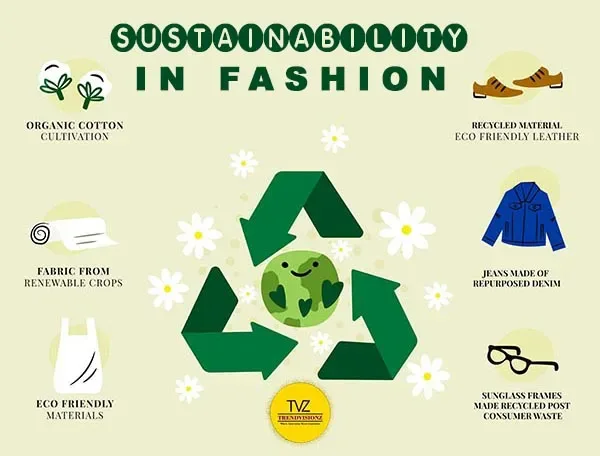Remain Ahead of the Contour by Exploring Ingenious Style Fads
In an industry as vibrant as fashion, staying ahead includes even more than just following current fads-- it requires an expedition of innovation. Smart textiles, for instance, are changing garments right into practical work of arts, while 3D printing is transforming layout procedures with its customizable, waste-reducing abilities. As sustainability becomes a keystone, innovations like green materials and circular style methods are reshaping ecological obligation - Cape Town Sustainable Fashion. Furthermore, the convergence of modern technology and fashion proclaims a new age of customer interaction. Exactly how, after that, can these emerging fads redefine the future of fashion, and what ramifications do they hold for brand names looking for to prosper in this progressing landscape?

Embracing Smart Textiles
Over the last few years, the garment industry has actually experienced a transformative change with the assimilation of clever fabrics, a sophisticated innovation that blends innovation with textile. This evolution stands for not just a combination of looks and performance yet additionally a considerable jump towards sustainability and customization in style. Smart textiles, also understood as e-textiles, installed sophisticated electronic devices such as sensors and conductive strings within the material, allowing garments to interact with the user or the setting.
These fabrics are developed to keep an eye on physical criteria, such as heart rate or body temperature level, giving real-time health analytics. Beyond health applications, smart fabrics are also being used for flexible garments, which can transform shade or pattern in feedback to environmental stimuli, thus using a vibrant fashion experience.
In addition, the advancement of energy-harvesting textiles that produce power from motion or sunshine is paving the way for self-dependent wearable innovation. This development is appealing to environmentally mindful customers and developers aiming to reduce the environmental footprint of style. As research and growth in this field advance, clever fabrics are expected to end up being significantly widespread, reshaping the landscape of modern-day fashion with their multifunctional capabilities.
The Rise of 3D Printing
Reinventing the production landscape, 3D printing has actually arised as a game-changer in the garment industry. This innovative technology has actually made it possible for designers to push the limits of creative thinking, generating complex and tailored garments that were previously unthinkable. By leveraging digital style and additive manufacturing, 3D printing facilitates the creation of complex geometries and patterns, enabling designers to trying out new appearances and structures.
A notable advantage of 3D printing in vogue is its capability to generate on-demand, decreasing waste and reducing inventory requirements. This effectiveness not just optimizes manufacturing procedures but also allows for fast prototyping, enabling designers to bring their visions to life in a much shorter duration. Moreover, 3D printing supports personalization somewhat unparalleled by standard approaches, supplying one-of-a-kind styles and tailored fits customized to specific customer choices.
The rise of 3D printing has likewise equalized style, making it available to arising developers that can currently make high-grade items without considerable monetary investment in conventional production infrastructure. As modern technology remains to development, the fashion sector is positioned to harness the full capacity of 3D printing, discovering new materials and techniques that will definitely redefine exactly how fashion is conceived and created.
Sustainable Fashion Advancements
As the apparel industry grapples with journalism need for ecological duty, lasting fashion advancements have emerged at the center of transformative modification. The expanding understanding of ecological effect has actually fueled a shift towards even more eco-conscious practices and materials. Developers anonymous and brands are currently focusing on sustainability, integrating approaches that minimize waste and minimize carbon impacts.
One considerable growth is the increase of round fashion, which highlights recycling and upcycling to prolong the lifecycle of garments. This technique not just decreases waste yet likewise urges customers to embrace a more mindful method to clothing consumption.
An additional innovation exists in the adoption of cutting-edge dyeing techniques that use all-natural dyes or waterless processes, thus reducing the huge amounts of water and chemicals commonly used in fabric dyeing. Moreover, improvements in biotechnology have led to the development of lab-grown leather and materials, offering ecologically pleasant and cruelty-free options to standard materials. Via these introducing initiatives, the garment industry is making meaningful strides in the direction of an extra lasting future.

Tech-Integrated Apparel
Tech-integrated clothing stands for a cutting-edge fusion of style and technology, improving how individuals engage with their garments. This ingenious domain name is marked by the addition of wise fabrics and embedded electronic parts, boosting both performance and visual charm. From physical fitness trackers installed in sportswear to warmed coats controlled through smart device apps, tech-integrated garments provides consumers unprecedented benefit and versatility.
Pioneering brands are driving this fad, concentrating on developing garments that respond to environmental stimuli or individual commands. For instance, some garments can transform shade or pattern in response to temperature level changes, while others integrate biometric sensing units to check wellness metrics like heart price or stress and anxiety degrees. The smooth combination of modern technology into fabrics also reaches ecological sustainability, with efforts to develop self-cleaning textiles or garments that get used to weather problems, hence reducing the requirement for multiple layers.
In addition, the advent of wearable technology is not just limited to clothing yet prolongs to accessories like watches and eyeglasses, further broadening the extent of tech-integrated fashion. As the market proceeds to innovate, the possibility for personalization and personalization in apparel expands, using customers unique, tech-enhanced fashion experiences that satisfy their specific demands and choices.
Future of Virtual Fashion
Over the last few years, the future of digital fashion has become a transformative pressure within the market, leveraging improvements in electronic technology to redefine exactly how style is developed, experienced, and consumed. By incorporating enhanced fact (AR), digital fact (VR), and 3D layout devices, designers can now craft interactive and immersive experiences that go beyond typical fashion boundaries. Virtual fashion enables for the production of garments that exist solely in digital atmospheres, supplying endless opportunities for advancement without the limitations of physical manufacturing.
This electronic change not just presents chances for innovative expression yet likewise addresses sustainability problems intrinsic in typical fashion practices. Cape Town click here to read Sustainable Fashion. By removing the requirement for physical resources, digital fashion minimizes waste and lessens carbon footprints. Furthermore, the surge of online style lines up with the boosting customer need for one-of-a-kind and tailored experiences, as digital garments can be tailored and customized to private choices effortlessly

Conclusion
The fashion market's future lies in the integration of lasting practices and ingenious innovations - Cape Town Sustainable Fashion. Smart fabrics and tech-integrated garments are enhancing capability, while 3D printing provides opportunities for personalization and waste reduction. Sustainable fashion, with green materials and round methods, shows a dedication to environmental stewardship. Furthermore, digital style is poised to redefine customer communications. Adapting to these trends is crucial read the full info here for brand names seeking to continue to be competitive and appropriate in this swiftly progressing landscape.
In current years, the style sector has witnessed a transformative change with the combination of wise textiles, an innovative technology that blends modern technology with material.As the fashion market grapples with the pushing requirement for ecological duty, lasting fashion developments have emerged at the center of transformative modification.In current years, the future of digital fashion has actually emerged as a transformative force within the sector, leveraging improvements in digital innovation to redefine how style is created, experienced, and taken in. The rise of digital fashion lines up with the enhancing customer demand for personalized and distinct experiences, as virtual garments can be personalized and customized to specific preferences with simplicity.
The style market's future lies in the assimilation of sustainable practices and ingenious technologies.